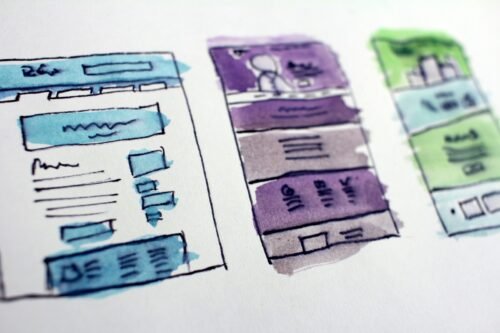Designing a website involves careful consideration of various elements to ensure an effective, user-friendly, and visually appealing online presence. Here are key website design considerations:
- User Experience (UX):
- Prioritize a seamless and intuitive user experience. Navigation should be easy, and users should find the information they need without unnecessary clicks.
- Responsive Design:
- Ensure your website is mobile-friendly and adapts to various screen sizes. Responsive design is crucial as a growing number of users access websites on smartphones and tablets.
- Loading Speed:
- Optimize your website for fast loading times. Slow-loading pages can lead to higher bounce rates. Compress images, use efficient coding, and leverage browser caching to improve speed.
- Clear Navigation:
- Design a clear and logical navigation menu. Visitors should easily understand how to navigate your site and find relevant information.
- Consistent Branding:
- Maintain consistent branding elements, including colors, fonts, and imagery. Consistency reinforces brand identity and creates a cohesive user experience.
- Readability and Typography:
- Choose legible fonts and maintain a proper font size for easy readability. Pay attention to line spacing and contrast to enhance text visibility.
- Whitespace and Clarity:
- Use whitespace strategically to avoid a cluttered appearance. Well-organized content with clear headings and sections improves overall clarity.
- Visual Hierarchy:
- Establish a clear visual hierarchy to guide users through the content. Highlight important elements using size, color, and placement.
- Accessibility:
- Design with accessibility in mind. Ensure your website is usable for individuals with disabilities by providing alt text for images, readable fonts, and keyboard navigation.
- Browser Compatibility:
- Test your website on various browsers to ensure compatibility. Different browsers may render websites differently, and cross-browser testing helps maintain a consistent user experience.
- Content Strategy:
- Develop a thoughtful content strategy. Organize content logically, use concise language, and incorporate visuals to enhance understanding.
- Calls-to-Action (CTAs):
- Clearly define CTAs to guide users toward desired actions. Whether it’s making a purchase, filling out a form, or subscribing, CTAs should stand out.
- Security:
- Prioritize security features, especially if your website involves user data. Implement SSL certificates for secure data transfer, use secure hosting, and keep software up to date.
- Scalability:
- Design with scalability in mind to accommodate future growth. Ensure your website can handle increased traffic and additional content without sacrificing performance.
- SEO-Friendly Design:
- Implement SEO best practices, such as optimizing images, creating descriptive meta tags, and using clean, semantic code. A search engine-friendly design contributes to better visibility on search engine results pages.
- Feedback and Testing:
- Gather feedback from users during the design process and conduct usability testing. Identify potential issues and refine the design based on user input.
- Social Media Integration:
- Integrate social media seamlessly into your design. Use social sharing buttons, display social feeds, and ensure consistent branding across social platforms.
- Loading Animation and Transitions:
- Consider incorporating subtle loading animations and transitions to enhance the user experience. Smooth transitions can contribute to a more polished and professional feel.
- Backup and Recovery:
- Implement regular backups and have a recovery plan in place. In case of data loss or website issues, a backup ensures you can restore your website quickly.
- Legal Compliance:
- Ensure your website complies with legal requirements, including privacy policies, cookie notifications, and accessibility standards.
By carefully considering these factors, you can create a website that not only looks visually appealing but also functions smoothly, providing a positive experience for your visitors. PMDigital Web Design is here to help answer any questions that you may have. Please contact us for further inquiries.







Leave a Reply